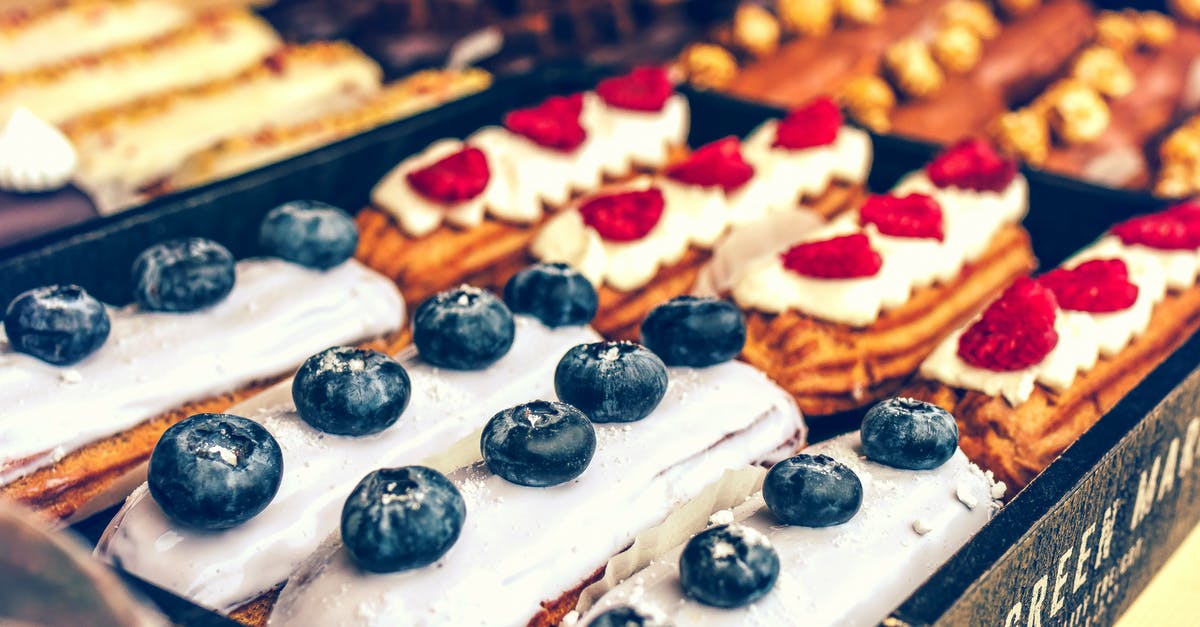What is the difference between quick bread and cake?

Quick breads, like banana or zucchini breads, seem to be assembled in an identical method and with similar ingredients as cake. Many recipes have comparable quantities of fat and sugar.
So what is the difference and how can you tell whether a baked good should be called a quick bread or a cake?
Best Answer
This question has become blown out of proportion. I was just curious- then I started getting answers that quickbreads and cake are the same thing- which they "obviously" aren't. So I started doing my own research.
Wikipedia says that the term quickbread was probably invented in the US after the discovery of chemical leavening. The Wikipedia references and some dictionaries corroborate this definition. Basically anything leavened with soda is quickbread.
This doesn't work. There are a great many things leavened with soda that can't be called quickbread. A good example is plain old white cake. Obviously this is a semantic issue but one that needed solving.
Two American cookbooks that I consider canonical recipe resources, The Joy of Cooking, and the Better Homes and Gardens cookbook, both have a separate quickbread section. In it are a variety of fruit breads as well as some biscuits and scones.
On Food and Cooking muddied the water a bit by differentiating between quick breads such as biscuits and batter breads such as banana bread. These were grouped together, however, and contrasted against cakes. This book says that cakes are higher in fat and sugar and have a more delicate texture.
Ratio, as linked in this answer, confused the terms a bit more also including a term "quick cake" but it differentiated between the different products with distinct ratios for the flour, fat, and sugar.
With several competing definitions I decided to take an unscientific poll. I called 6 friends in Washington, Utah, Georgia, and Texas. I tried to find a variety of American cultures. Obviously it is biased by the fact that I know all of them.
When asked "What is quickbread to you?" without exception all of them replied "banana bread"
When I followed up with: "What is the difference between that and cake" I received the following answers:
"It is eaten at breakfast"
"It has less sugar"
"It is loaf shaped"
"It is more dense"
"It has a more open texture"
My conclusion is that the historical definition of "anything with soda" is no longer useful. In cookbooks it seems to now be applied to chemically risen baked goods that:
- have as a rule of thumb a particular ratio of flour, fat, and sugar
- have less sugar than cake
- refers in particular to fruit breads, biscuits, and scones
- generally has an irregular vs uniform texture
The popular definition (among my extremely limited, unrandom sampling) adds:
- tends to be loaf shaped
And now I can sleep easily again.
Pictures about "What is the difference between quick bread and cake?"



Quick Answer about "What is the difference between quick bread and cake?"
Quick breads typically have less sugar and fat than cakes, so the crumb tends to be coarse but it should still be a little moist when you eat it. Yum! Next, we determined the desired mixing method. Some recipes call for using a mixer to cream the butter with the sugar, then mix in the remaining ingredients.What is the difference between bread and cake?
The difference between cake and bread is that a cake is sweeter, more delicious, and contains much more calories than bread. Cakes are leavened using baking soda while the bread is leavened using yeast. Cakes are prepared using a lot of ingredients to make them tastier while the bread is prepared chiefly with flour.What is the difference between quick bread and?
Quick breads use baking soda or baking powder as a leavening agent while yeast breads use active or dry yeast. The catalyst for yeast breads is usually some type of sugar or honey. The catalyst for quick breads is salt. Salt may also be an ingredient in yeast breads.What is the difference between cake and bread flour?
Cake flour's lower protein means less gluten is formed as you mix the batter together. Less gluten formation equates to a softer, fluffier texture. Bread flour has a high protein content, which means more gluten forms during the mixing process.What is the difference between banana bread and cake?
As their names suggest, banana bread is a type of bread made with mashed bananas, while banana cake is a type of cake made with banana as the main ingredient. The main difference between banana bread and cake is that banana bread is firmer and denser in texture than banana cake.WHAT ARE QUICK BREADS? | Quick Bread Overview
More answers regarding what is the difference between quick bread and cake?
Answer 2
Blowing small issues out of proportion is a favored hobby on SE. ;)
I've thought about this a fair amount, given some recent interest in the topic, and I think we've run into an etymological problem more than a culinary one. There are many cases where things get assigned a name based on usage, common settings, or common features, that disagrees with the name you would assign it from a purely taxological position. Common examples would be: Whales were called "fish" for many years. Tomatoes are botanically fruits, but are commonly referred to as a vegetable (as are eggplants, peppers, etc.). Cheesecake is called "cake", when structurally it is clearly a custard pie.
In the case of quickbread/cake, I think the problem comes down to the fact that, while many cakes use chemical leavening, they weren't invented because of chemical leavening.
As far as I can tell, the prototypical "quickbreads", such as muffins, scones, soda-bread, American-style biscuits, banana bread, etc., were invented largely because of the existence of baking powder. Certainly people made foods like this before that, but using only natural leavening or no leavening would leave them very different from the modern versions.
These breads share a common trigger, and some common features. They are all relatively low fat, relatively low sugar, they do not rely on the formation of gluten to build structure (yet, historically, are typically made with moderate protein all-purpose flours), and even when they do have fats and sugars, they do not rely on them to inhibit the development of gluten in a specific way (as in a pastry), instead, they all share the "muffin method" of mixing wet and dry ingredients separately, then combining, mixing quickly, then immediately baking.
Cakes, on the other hand, have been using other forms of air-introduction for a long time. Think about the traditional pound cake, which uses air trapped when butter crystals are creamed with sugar. Traditional recipes call for you to cream the butter and sugar together for hours and hours to get enough air in (easy when you have servants). Angel food cakes use beat egg whites to get sufficient air into the mixture. Most use low protein cake flour and high fat content to prevent the formation of gluten, meaning the "muffin method" of mixing is not commonly used.
These cakes were not invented to rely on chemical leavening, even though they took advantage of it once it was invented. Modern cake-in-a-box is much like a quickbread in that it uses 100% chemical leavening, but it uses low protein flour to prevent the formation of gluten during mixing, and it wasn't really "born" to use chemical leavening - its closest ancestors didn't need it. I could bake you a number of delicious cakes without the use of baking powder, but it is such a convenient tool for a more reliable boost that it is very commonly used.
In conclusion, while modern quick breads and many modern cakes share many recipe details, they don't register as the same thing in people's minds because of their different histories, and some details about their construction. They arrived at a similar place through convergent evolution, not because they are closely related to each other. Language isn't just about accurate description and taxonomy, it is about history, intent, and a associations. I can't begrudge people for not calling cake "quickbread", not calling a pepper "fruit", or not calling Cheesecake "New York Custard Pie".
Interesting resources:
- Google N-Gram results showing the rise of terms such as "quick bread", "soda bread" and "banana" bread. All modern inventions.
- Google N-Gram results showing the invention of baking powder in the late 1800's (technically "invented" in 1843, with the most popular double-acting powders reaching the market in the 1880s), culminating with a huge spike in popularity right after 1900.
Answer 3
They're not mutually exclusive; cakes are simply a type of quick bread. Quick bread is a term that applies to dough/batter that was leavened without the use of yeast - for example, with baking powder or soda. There are many different types of quick breads: scones, muffins, biscuits, cornbread, even brownies, really, and also your banana breads.
Answer 4
This is nonsense which people who think they know what they are talking about created themselves. Quick breads have less sugar than cake? So what, if I like sweetness and add more sugar and bake it round, it turns into a cake?
There is no explanation, because there is no such a type as quick bread. We all have unexplainable ways with words.
Sources: Stack Exchange - This article follows the attribution requirements of Stack Exchange and is licensed under CC BY-SA 3.0.
Images: Daria Shevtsova, Daria Shevtsova, Artem Beliaikin, Element5 Digital
